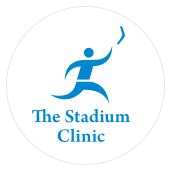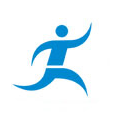Childhood Injuries
The number of children participating in sports activities has increased in recent years resulting in an increased incidence of childhood sports injuries.
Causes include accidental injuries, inadequate training or practice, and improper or inadequate use of protective devices. The most common sports injuries in children are soft-tissue injuries and head injury. Some injuries can be minor such as bruises or sprains while others can be more serious.
Childhood sports injuries can be classified as follows:
- Sprains and Strains: A sprain is a condition where the ligament, the band of tissue that joins two bones, is injured. The ankle is the most common site for sprains. Strain is caused by any injury to a muscle or tendon, the cord-like tissue which connects muscle to bone.
- Growth plate injuries: Growth plate injuries occur when the area at the end of the long bones, the growth plate, is damaged. In children, this area is soft and once growth is complete, it is replaced by solid bone.
- Apophysitis: these are overuse injuries affecting growing children. It is usually due to repetitive overuse of a tendon where it attaches to the bone leading to inflammation and pain. It settles over 1-2 years as the skeleton matures.
Causes of sports injuries in children include the following:
- During a growth spurt the changes in body shape and size increase the forces across bones and joints making them more susceptible to injuries
- Poor sports training/ technique or inadequate practice contribute to childhood sports injuries.
- Lack of adequate protection or improper use of protective devices such as mouth guards and pads.
- Insufficient stretching or warm-up exercises before playing sports.
Treatment for sports injuries varies with the type of injury. The most common treatment recommended for injury is protect, rest, ice, compression and elevation (PRICE). If there is severe injury such as a head injury, broken bone, excessive swelling or severe pain, you should seek immediate medical treatment.
Treating injuries with “PRICE”:
- Protection: to prevent further injury for example with the use of crutches in a lower limb injury.
- Rest: You should not move or use the injured part of the body for at least 48 hours. For example, if you have a leg injury, avoid standing or walking.
- Ice: An ice-pack should be applied over the injured area four to eight times a day, for 20 minutes each time. Ice packs reduce swelling and relieve pain.
- Compression: Compression of the injured area helps to reduce swelling. Elastic wraps, splints and special boots can accomplish this.
- Elevation: Place the injured part above the level of the heart to reduce swelling.


